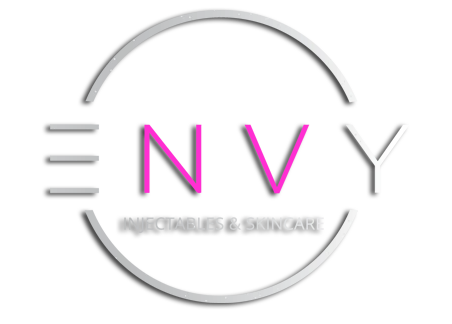
What is sunscreen exactly?
Sunscreen, also known as sunblock or sun cream, is a photo-protective topical product for the skin that absorbs or reflects some of the sun’s ultraviolet radiation and thus helps protect against sunburn and most importantly prevents skin cancer.
Sunscreens contain active ingredients that protect skin cells from the sun’s ultraviolet radiation, including UVB (the rays that cause burning) and UVA (the rays that cause skin aging), in order to prevent skin damage that can lead to skin cancer as well as signs of aging. Sunscreens work by incorporating either chemical or physical active ingredients (or a combination of both) to protect skin against UV damage.
Benefits of sun protection.
Sunscreen, when used daily, can and will provide many benefits to the skin. Consistent use of skin protection will help to reduce the signs of aging by limiting the appearance of sunspots and early onset of sagging skin as well as fine lines and wrinkles. It protects from sunburn, inflammation, and hyperpigmentation, but most importantly it protects your skin from skin cancer. The use of sunscreen has been shown to reduce the incidence of both melanoma and non-melanoma skin cancers (2).
What is the damage being done if you don’t use sunscreen?
The sun’s rays take a toll on your skin, thus prematurely aging the skin. This is referred to as photo-aging and in turn can lead to skin cancer, spot, fine lines, and wrinkles. This damage is known in the skincare industry by several names, including photoaging, photodamage, solar damage, or sun damage. When ultraviolet (UV) light hits the skin that is not properly protected by sunscreen it causes changes to the DNA at a cellular level. Photo-damage happens at the deepest layer of the skin, the dermis. The damage that is done can take years before it reaches the surface of the skin and becomes visible. This is why it is so important to start using sunscreen at a young age and be consistent. The benefits will reveal themselves once you reach your 30s and beyond when all your friends have to combat the damage they did when they were young and you are looking young and fabulous. If aging skin isn’t enough of a motivating factor let’s look at some statistics. Skin that is exposed to ultraviolet radiation is estimated to be associated with 80%–90% of skin cancers. Daily use of an SPF of 15 or higher can reduce your risk of developing squamous cell carcinoma by about 40%; additionally, it can lower your melanoma risk by 50% (1). It is important to note melanoma is the most common type of cancer as well as the most dangerous (3).
Physical vs. Chemical Sunscreen?
Chemical sunscreens are made with chemical active ingredients like avobenzone and homosalate. This type of sunscreen absorbs into the skin and then absorbs UV rays, converts the rays into heat, and releases them from the body.
Chemical sunscreen is a better option if you:
- Are swimming and need a water-resistant formulation.
- Play sports or sweat a lot during the day.
- Want a sunscreen that absorbs quickly into the skin.
Physical sunscreens (also known as mineral sunscreens) contain mineral-active sunscreen ingredients like zinc oxide and titanium dioxide. Physical sunscreen sits on top of the skin and reflects the sun’s rays.
Physical sunscreen tends to be:
- Less irritating and a better fit for sensitive skin.
- More moisturizing
What does the number in SPF mean?
“SPF” stands for Sun Protection Factor and is followed by a number (i.e. 15, 30, 50, etc.) this number indicates how long it will take the sun’s UVB rays to burn skin when the product is applied as directed on the label versus how long it would take skin to burn without any SPF protection.
For example, SPF 50 indicates it will take 50 times longer for skin to burn during sun exposure when wearing the product than when not wearing any SPF. The SPF number refers only to the protection provided against UVB rays, it is important to look for the term “broad spectrum” on packaging to ensure the product also protects against UVA rays.
The SPF number on sunscreen does make a difference, from SPF 30 and below to SPF 50 and above, even if the difference between the numbers themselves seems minimal. SPF 30 filters 96.7% of UV rays, meaning it allows 3.3% to reach the skin, while SPF 60 filters 98.3% of UV rays, allowing 1.7% through. Which is to say SPF 30 actually lets twice as much UV reach the skin as SPF 60.” (4)
Remember to always re-apply every 2 hours, if you are outdoors choose water-resistant sunscreen and re-apply after swimming or sweating.
What to look for when choosing a sunscreen.
There are several things to look for on the label when selecting a sunscreen
- Broad-spectrum (protects from both UVA and UVB rays)
- Fragrance-free
- Non-comedogenic (won’t clog pores)
- Oil-free
- Paraben-free
- SPF of at least 30 or higher
References
- Koh HK, Geller AC, Miller DR, et al.Prevention and early detection strategies for melanoma and skin cancer. Current status. Arch Dermatol1996;132:436–43.
- Green A, Williams G, Neale R, et al. Daily sunscreen application and betacarotene supplementation in prevention of basal-cell and squamous-cell carcinomas of the skin: a randomized controlled trial. Lancet1999;354:723–9
- Venosa, Ali (2021). How Dangerous Is Melanoma? It’s All A Matter Of Timing. https://www.skincancer.org/blog/dangerous-melanoma-matter-timing/
- Green, Adele, Holmes, Amy(2022). What does the SPF rating really mean?https://www.science.org.au/curious/people-medicine/what-does-spf-rating-really-mean

